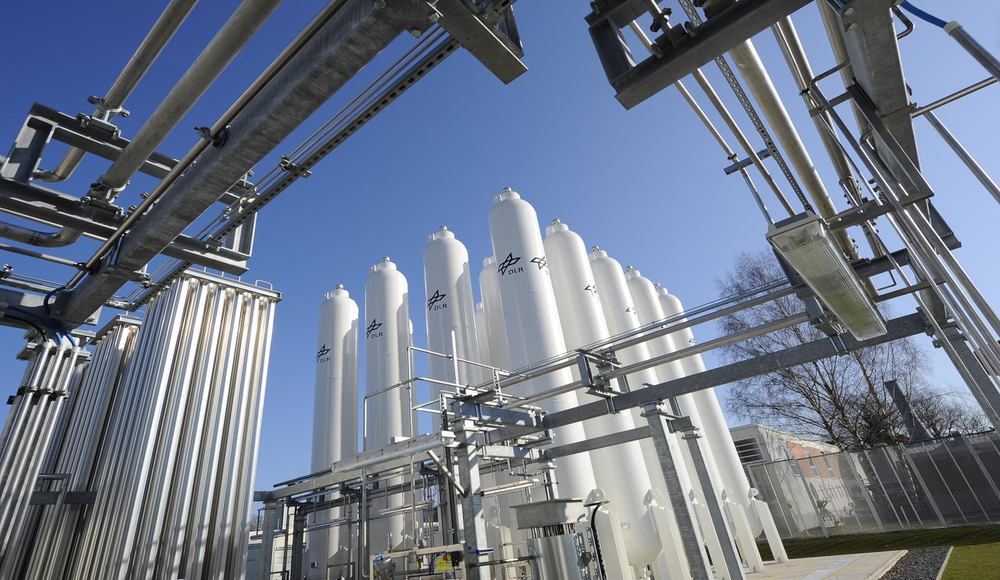Hydrogen Tank Certification
Alternative Source of Energy
Hydrogen is a promising energy carrier that can provide a sustainable alternative to fossil fuels and thus reduce emissions in the mobility sector. Depending on the application, different hydrogen storage technologies are possible. High-pressure tanks for gas storage currently dominate in the land transport sector, while the storage of liquid hydrogen (LH2) is being researched for aviation and shipping. Other options include cryogenic high-pressure storage and metal hydride storage. In addition to the technological maturity of the storage system, the prerequisite for the utilisation of hydrogen is the certification of the tanks, which is of crucial importance for the widespread use of hydrogen.
Development of Guidelines
For the use of liquid hydrogen or metal hydride in aviation and shipping, the relevant regulations and guidelines as well as the methods and procedures for testing are not available and need to be developed. Approval guidelines already exist for high-pressure gaseous storage, but as with cryogenic storage, there is a need to reduce weight and increase cost efficiency for these tank systems. This requires research and critical examination of market authorisation guidelines and methods.
Project goals
The Hydrogen Tank Certification (HYTAZER) project aims to provide solutions for all aspects relevant to the certification of a hydrogen refuelling system. In this way, the overall goal of enabling the widespread use of hydrogen in various transport systems such as aerospace, rail, automotive and shipping can be achieved.
The Institute of Maritime Energy Systems is mainly involved in four different aspects that integrate the shipping sector into the project. These include the theoretical and practical aspects of future storage systems. Not only novel fuels such as LH2 and CH2, but also other potential fuels such as NH3, CH3OH, LOHC are being researched to enable broad utilisation in shipping.
Core themes |
|---|
LH2 and CH2 tank systems in shipping |
Development of fuel recommendations for specific ship types, including the identification of regulatory gaps |
Data analysis of the test results and validation of the numerical models and the digital twins |
Use of novel fuels in refuelling systems for terrestrial and maritime applications |
To achieve these goals, the institute is developing a demonstration facility for researching new types of infrastructure for fuel storage in a real environment. The facility will enable modular tests of individual components of the maritime energy system with the actual fuel under realistic conditions. A hexapod can be used to simulate the movement of the ship and generate a salty atmosphere. For example, fatigue tests of pipes and hoses or functional tests of pumps and valves are possible. This combination of cryogenic temperatures, realistic loads and environmental conditions is a unique opportunity to test and validate components.
Certification of Hydrogen tanks
Methods and procedures that demonstrate compliance with the requirements set out in the certification specifications are customised, further developed and demonstrated for suitable applications. The tank systems under consideration are low-temperature and high-pressure storage systems and combinations thereof. Various material systems made of metal and composite materials are considered for the tanks.
The starting point for the research work within HYTAZER is the broad experience of several DLR institutes from the aerospace and automotive sectors, in which LH2 and high-pressure storage systems are used and approaches to certification already exist. For all hydrogen storage systems, the current status of the certification specification is reviewed in the specific context of the application in a transport system and the need for adaptation, extension or derivation of new specifications is identified.
The possibility of using simulation-based approaches to demonstrate compliance with the certification requirements is analysed. This also makes it possible to estimate how many experiments and costs could be saved in the certification process. The potential for cost and weight savings can also be estimated, which in turn enables the extensive use of hydrogen in transport systems.
Interdisciplinary collaboration
The cooperation of several institutes within HYTAZER, which pools the expertise of all DLR programme areas, ensures the transfer of knowledge and experience on certification procedures for different transport systems. In addition, synergies from previous and ongoing projects at DLR are utilised.

